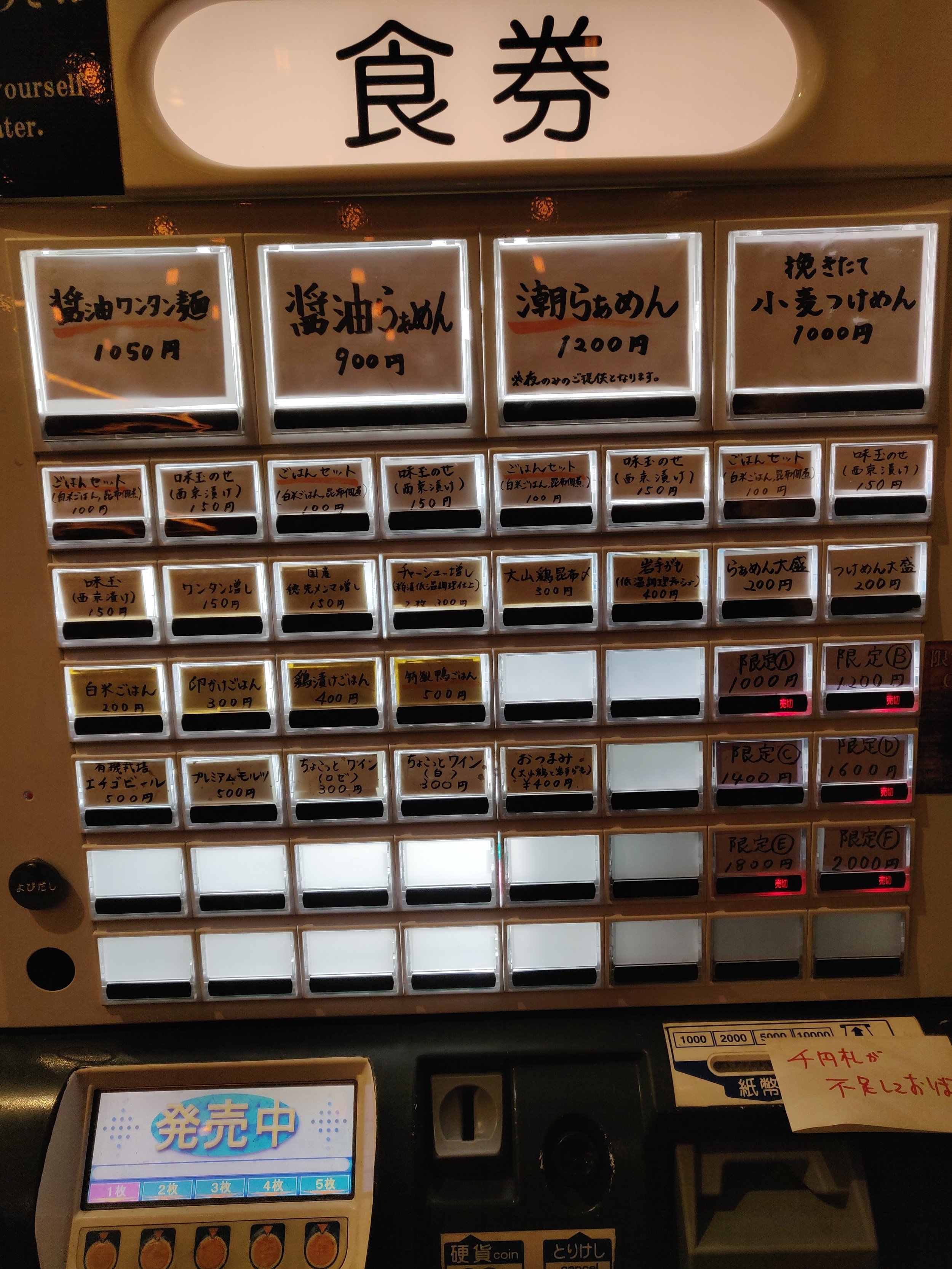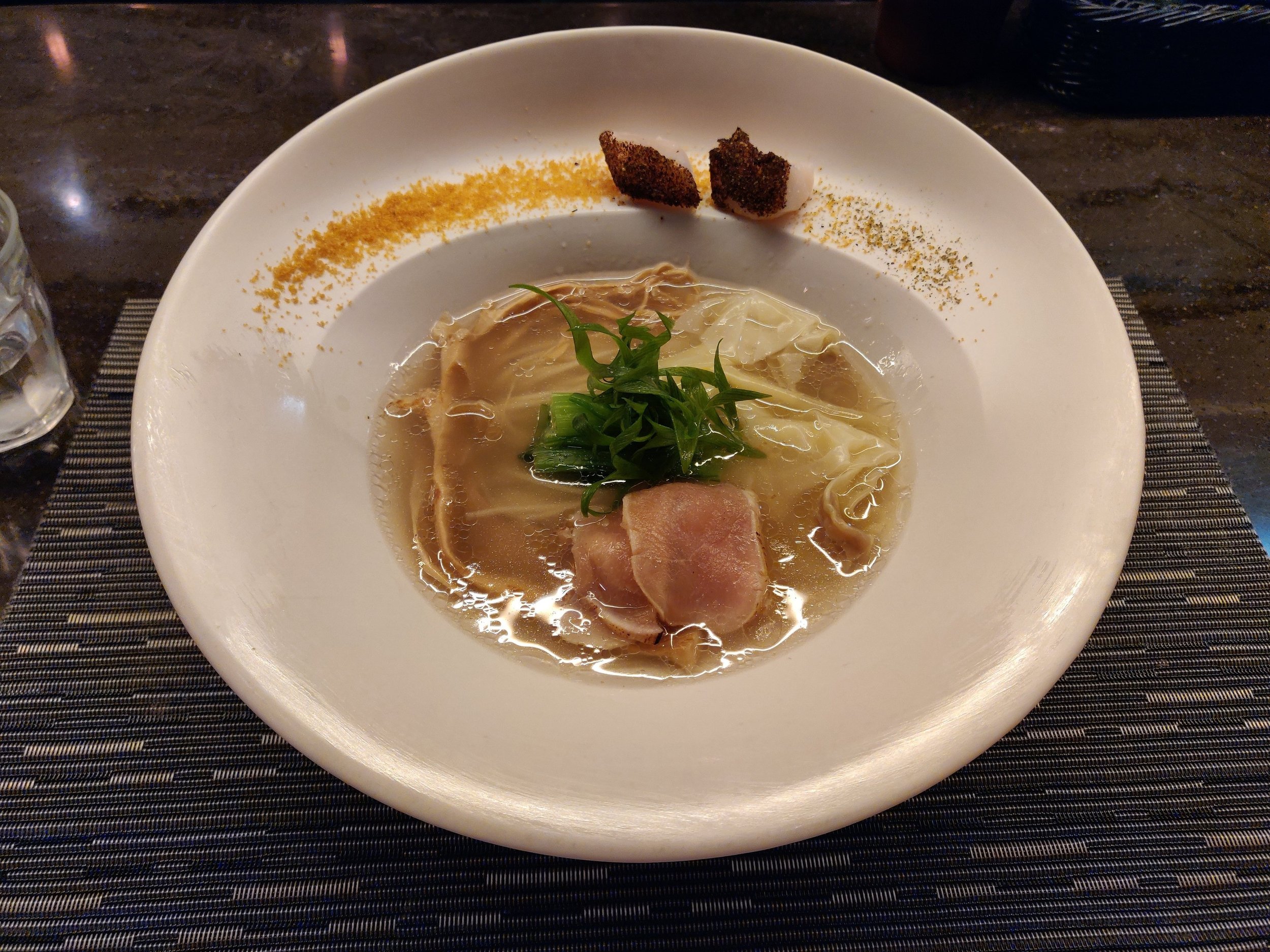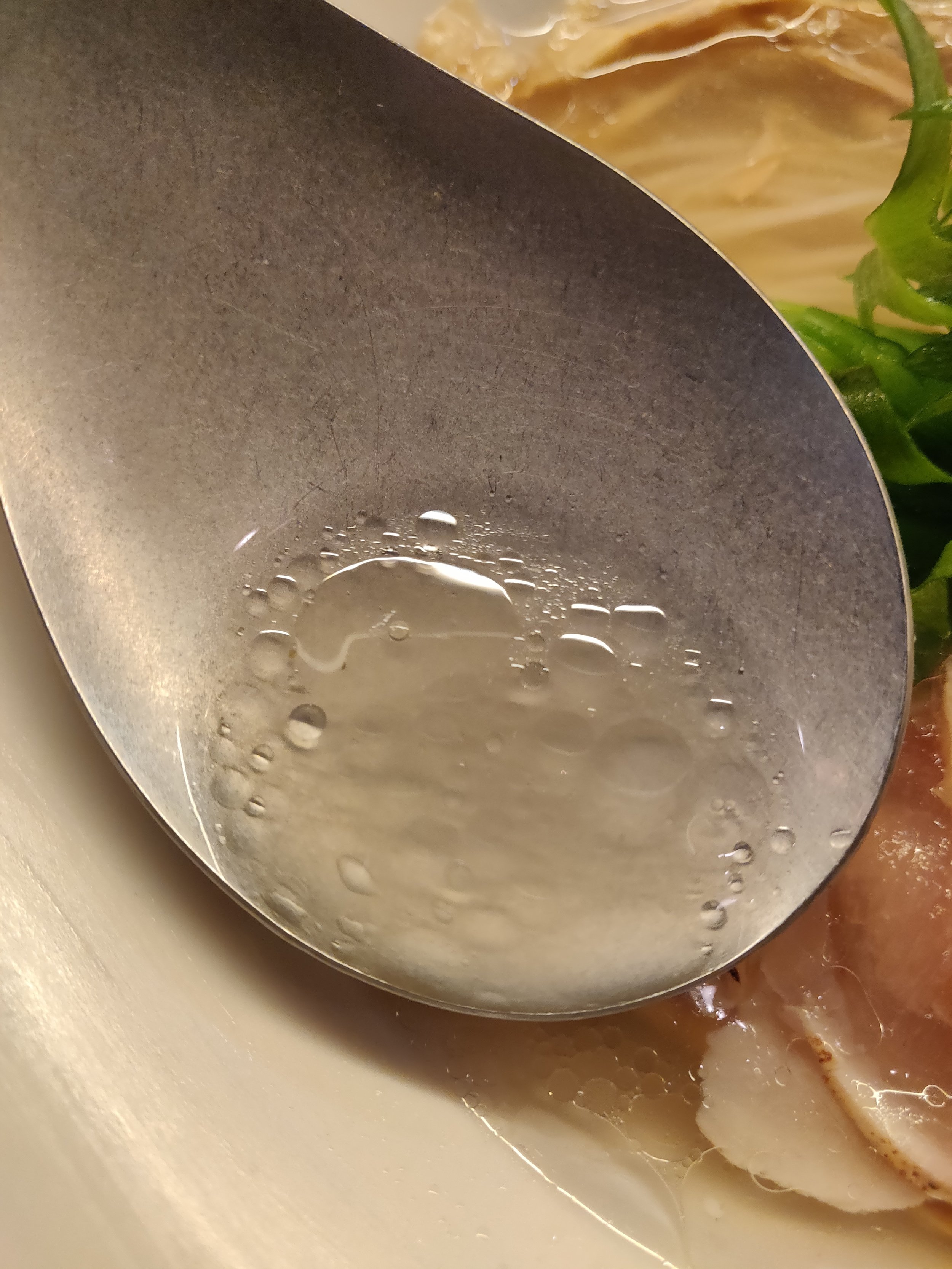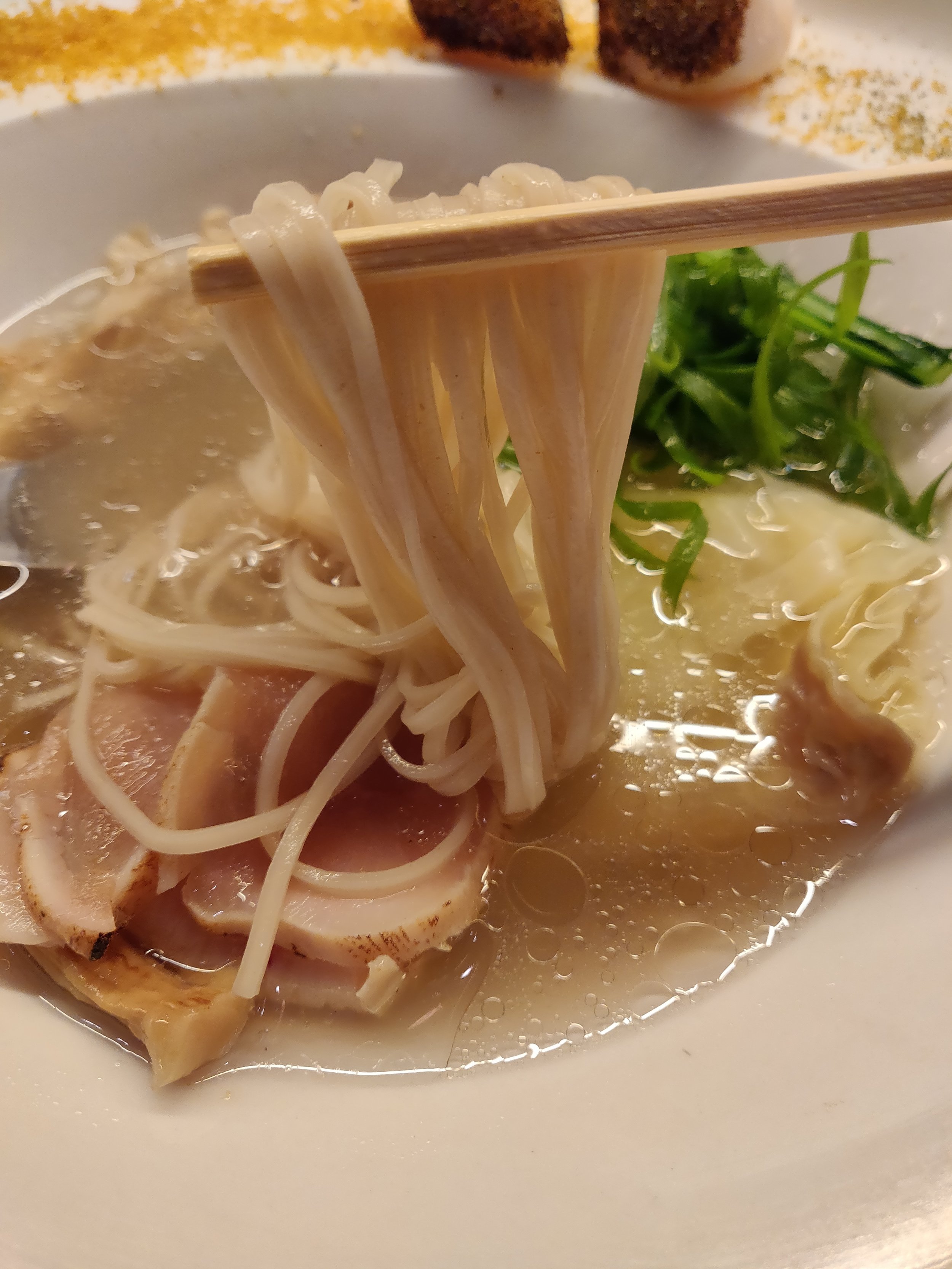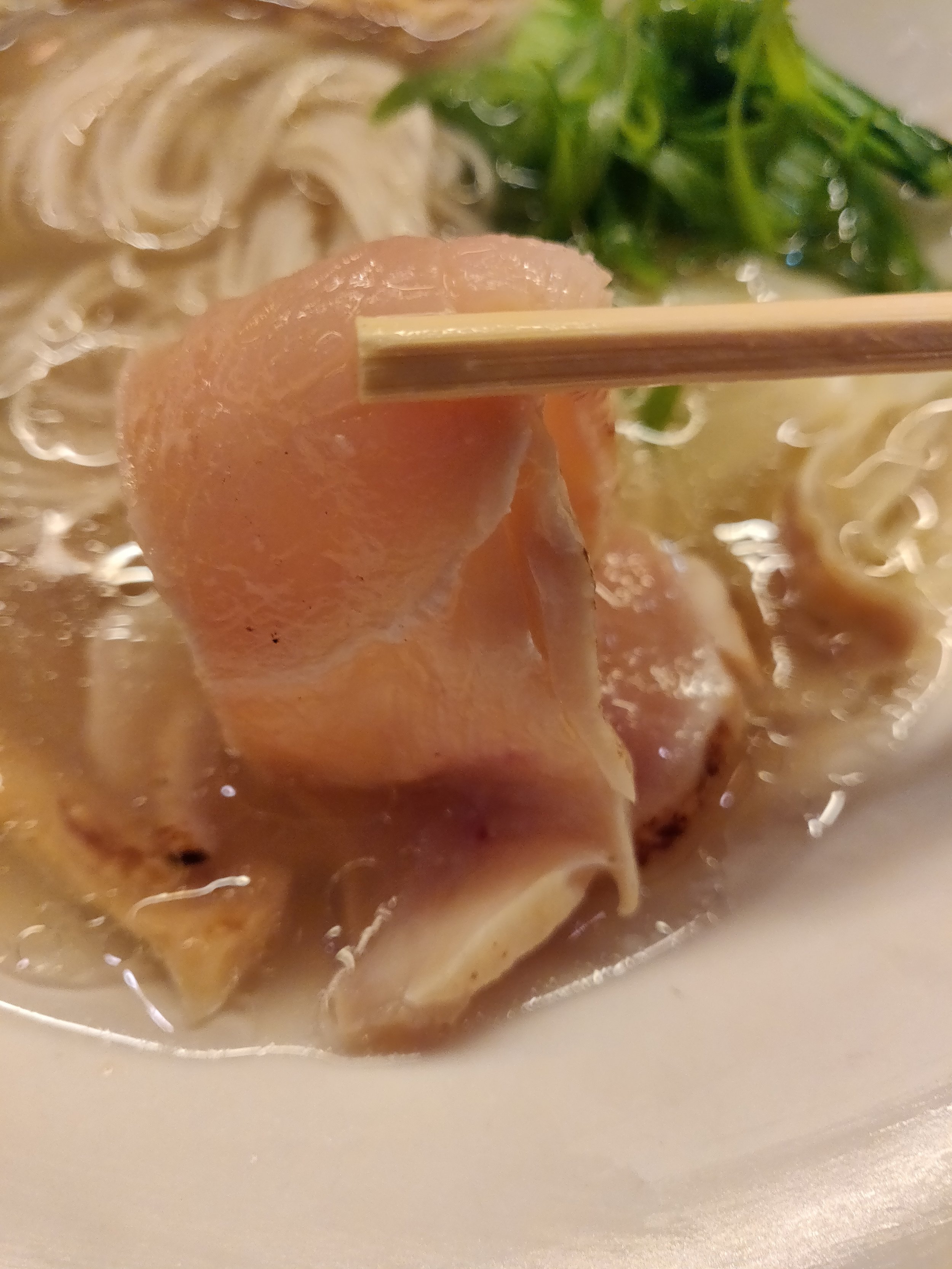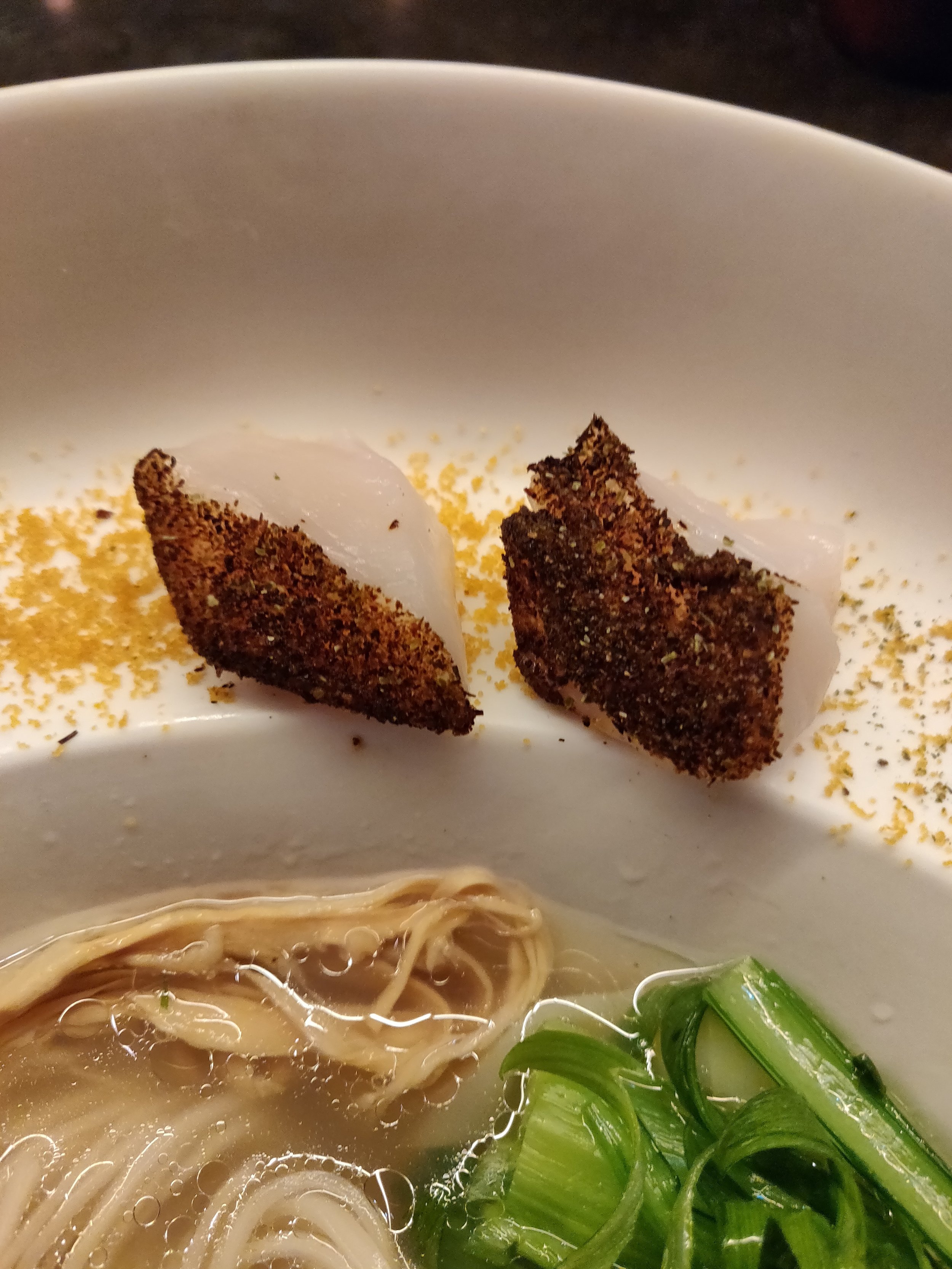Mensho (めんしょう); Fine Dining Ramen, Gotokuji Station
So I recently reviewed Jikaseimen Mensho Tokyo and while I was writing, I realized I had yet to write about the other Mensho brand restaurants I’ve been to so far. More specifically, I realized I hadn’t reviewed my favorite restaurant of the brand. Mensho is a product of the Mensho brand after numerous successful restaurant openings both in Japan and the US (San Francisco). Made after the success of their ramen shop in SF, you can really see that San Francisco influence. The idea here is farm to table, everything from the noodles to the soup are all made in house and you can even see the noodle making process in the machines behind their open kitchen. Interiors and decor is high end; this isn’t just a mom and pop, neighborhood ramen shop. The shop reminds you of a fancy seafood, crudo bar you’ll see near the wharf in SF. You won’t need to show up in a dinner suit or dress, but you’ll definitely feel the fancy vibes when you sit down. Mensho is open Tuesday to Sunday from 11:00-15:00 for lunch and 17:00 to 21:00 for dinners. The restaurant is closed on Mondays so be careful not to show up then.
Mensho is located about a five minute walk south of Gokokuji station. The shop is inside an office building and a bit discreet as it looks nothing like a typical ramen shop. However you’ll find signs right outside with its menu to indicate that you’re in the vicinity. For a restaurant with a location in America, I would have thought there would be English on the ticket machine, but unfortunately they didn’t. I’ll translate the machine here. Starting with the first row of big buttons up top are the Shoyu Won Ton Ramen, Shoyu Ramen, Ushio Ramen (Dinner only), and Wheat Tsukemen. The buttons on the next two rows below the bigger ones correlate to the topping options for each ramen variety. For the Shoyu Won Ton Ramen, starting from the top left clockwise are the Rice set, with Ajitama (soft boiled egg), extra won tons, and Ajitama on the side. For the Shoyu Ramen, the toppings are Rice set, with Ajitama, extra char siu, and extra menma bamboo shoots. For the dinner only Ushio Ramen are the rice set, with ajitama, extra scallop topping, and extra chicken char siu. Finally the Tsukemen options are rice set, with ajitama, and the two below are for extra noodles (same menu item for both buttons). The next row of buttons are a bowl of rice, rice with raw egg, rice with chicken, and rice with duck. Below that are the drink options of Ichigo beer, Premium Malts beer, Rose wine, White wine, and appetizers for your alcohol. The buttons on the far right are set menus that were not available when I visited, but are usually posted on a banner outside. The Ushio Ramen, Mensho’s rendition of the shio ramen, is only available during dinner and is the most popular item on the menu. I was determined to try it and so I went right when it opened and bought my ticket for it. The portions aren’t particularly big so if you come with a big appetite, I would suggest supplementing your ramen order with a side of one of the rice dishes. From what I saw, looking at the orders of people around me, even the rice dishes are elegantly plated and had very special qualities to them that were carefully explained to the patrons.
So I love seafood based ramen, hence my determination to try their dinner only shio ramen which is made using a snapper and scallop broth. After handing my ticket to the staff behind the counter I received my bowl in about ten minutes. I watched as they meticulously created my bowl; first pouring in the seasoning tare, then the broth to create the soup, next the noodles folded gently in, and finally each topping carefully placed in a set location. The toppings that come with this bowl are rare chicken slices, won tons, menma bamboo shoots, a spoonful of green onions, and a cured scallop with karasumi, or dried fish roe sprinkled over. Simply put, the ramen is gorgeous. The actual bowl is made specifically for this ramen with the ridge up top to hold the scallop and karasumi so that the scallop doesn’t cook in the hot soup and karasumi can be used to change up the flavors mid meal.
I started off by getting a spoonful of their gorgeous, yellow tinted soup. The broth is brimming with delicious seafood umami and flavor. The tare seasoning oil is salt based and accentuates the seafood flavors brilliantly. I honestly couldn’t get over how good the soup was. Due to the nature of its broth, it is very gentle and delicate to the palette. It’s not overpowering and it draws you in with each spoonful. At first you get the full bodied, savory impressions of the snapper which is followed by the brine-y, but sweet aromas of the scallops. It draws some fattiness and oil from the meat of the snapper that you can see in the attached photo. Since the fat and oils come from the fish, you definitely don’t get any of the pungent smells and milky flavor you might get with one from something like pork or chicken. Both the snapper and scallop broths are beautifully paired with the rock salt seasoning oil that encapsulates the natural, ocean theme of the ramen. Noodles, as I said before, is made in house and tailored for the soup. They are thin and flat with just the slightest hints of wheat mixed into the dough that you can see speckles off when picking them up from out of the soup. It was quite low in alkaline and tasted very fresh. I doubt there is any resting and aging involved with the noodle making process given its selling point of fresh, high quality ingredients ramen. Since there is not too much resting (from what I can tell), the noodles were quite soft and didn’t have too much of a chew. However, given its use in a gentle ramen broth, I thought it worked well as is.
So the toppings here are fantastic, but the presence of raw chicken might deter some foreigners from trying this bowl. The chicken is sliced fresh and you typically don’t have to worry about salmonella in Japan when using such high quality ingredients. I don’t want to get in any legal troubles so I can’t guarantee you won’t get any food poisoning, but this is common practice here in Japan and you’ll find raw chicken at top yakitori restaurants around Tokyo as well. I will leave the decision up to you, but I enjoyed the chicken slices and it had a pleasant, full bodied flavor and chewy texture. The chicken is seared around the edges and it does cook through the residual heat of the soup so I found it was nice eating a slice in the beginning raw, and cooked more towards a medium rare later on in the meal as it soaked up the hot soup. The scallops were phenomenal as they are kombu (Japanese seaweed) cured and has a bit of a peppery crust on the outside. I love the flavors it adds to the soup as it gives it a fantastic salty finish from the kombu cure, but a subtle sweetness as scallops usually tend to do. The won tons were ok if I’m being completely honest. In comparison to the other toppings, it seemed pretty basic, but then again, the other toppings were so unique and delicious that it may just be an unfair comparison. Lastly the Karasumi, or cured fish roe, that is grated on the top layer of the bowl is mind blowing. I didn’t expect the level of how much it changes the overall flavors of the ramen. When you are presented with the bowl, the chef will explain that you should eat some of the ramen first, then dip your noodles in to the Karasumi, and finally pour some soup over it so it integrates in to the ramen. As it is cured when you dip the noodles in to it, you’re immediately hit with a super salty punch to your tongue, but as you let it settle, you start to get that fish roe aroma filling your mouth. Once it mixes with the soup, much like a katsuobushi would do to broth, the soup gets another extra layer of umami that surpasses that of the snapper and scallop. I love when I get to change up the flavors of a ramen mid bowl and the karasumi was a great way to do it as it still fit with the overall theme of the dish.
Of all the seafood based ramen I’ve had so far in my life, Mensho is definitely top two. I’m actually surprised Mensho hasn’t received any Michelin guide nods…not even a bib gourmand. The interior and decor reflects something I’d expect from a Michelin star restaurant and the use of such high quality, farm to table ingredients for their ramen is a tier higher than a place like Japanese Soba Noodles Tsuta for example. Followers of my blog may know my distaste for Tsuta so I could be biased, but honestly the use of Karasumi works way better as a ramen accent than the black truffle used over at Tsuta. If you’re looking for some high class ramen, make your way to Mensho. The ramen was worth every cent and the atmosphere of the restaurant, from the service to the extravagance, made for an incredibly satisfying experience. As always, let me know if you make it over to Mensho on my social media accounts or in the comment section below. I love hearing from all of you and would love to see your reviews and how it compares to mine!

